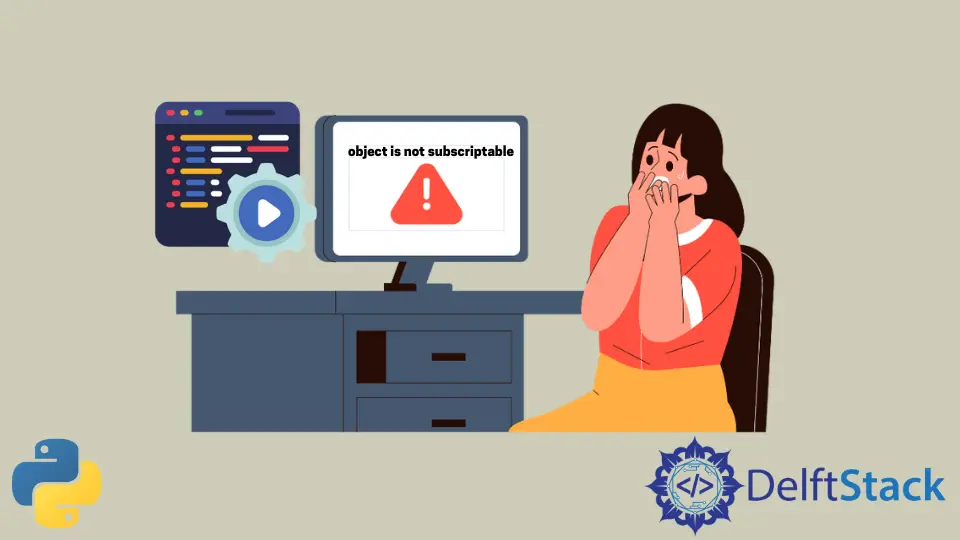Cómo arreglar el error Object Is Not Subscriptable en Python

En Python, el error object is not subscriptable se explica por sí mismo. Si te encontraste con este error en Python y buscas una solución, sigue leyendo.
Solucione el error object is not subscriptable en Python
Primero, debemos comprender el significado de este error y debemos saber qué significa subíndice.
Un subíndice es un símbolo o número en un lenguaje de programación para identificar elementos. Entonces, por object is not subscriptable, es obvio que la estructura de datos no tiene esta funcionalidad.
Por ejemplo, eche un vistazo al siguiente código.
# An integer
Number = 123
Number[1] # trying to get its element on its first subscript
Ejecutar el código anterior generará un error ya que un número entero no tiene múltiples valores. Por lo tanto, la necesidad de un subíndice en un número entero no tiene sentido. Veamos algunos ejemplos más.
# Set always has unique Elements
Set = {1, 2, 3}
# getting second index of set #wrong
Set[2]
Inicializamos un conjunto con algunos valores; no lo confunda con una lista o un array. Un conjunto no tiene subíndices. Es decir, el código anterior también dará el mismo error.
No podemos mostrar un solo valor de un conjunto. Si usamos un bucle para imprimir los valores establecidos, notará que no sigue ningún orden.
No existe un índice que identifique su valor. La salida del siguiente código dará una salida de orden diferente.
# Set always has unique Elements
Set = {1, 2, 4, 5, 38, 9, 88, 6, 10, 13, 12, 15, 11}
# getting second index of set
for i in Set:
print(i)
Cuando se trata de cadenas o listas, puede usar subíndices para identificar cada elemento. Eso es como imprimir y obtener un valor de un array simple. Echar un vistazo.
# string variable
string = "Hello I am Python"
print(string[4])
Producción :
o
El código anterior se ejecutará con éxito y la salida será o, ya que está presente en el quinto índice/subíndice de la cadena (0-4). Este objeto es subíndice.
# function which returns a list
def my_Func():
return list(range(0, 10))
# correct
print(my_Func()[3])
Producción :
3
En el código anterior, tenemos una función que devuelve una lista que también se puede suscribir. Como puede ver, estamos mostrando el tercer elemento de la lista y usando el subíndice y el método de índice.
Haider specializes in technical writing. He has a solid background in computer science that allows him to create engaging, original, and compelling technical tutorials. In his free time, he enjoys adding new skills to his repertoire and watching Netflix.
LinkedInArtículo relacionado - Python Error
- Administrar fallas de segmentación en Python
- Archivo <Stdin>, Línea 1, en <Módulo> Error en Python
- Arreglar AttributeError: el objeto 'generador' no tiene atributo 'siguiente' en Python
- Arreglar el comando cl.exe falló: no existe tal archivo o directorio en Windows
- Arreglar NameError: la variable no está definida en Python
- Arreglar Socket.Gaierror: [Errno 8] Nodename ni Servname proporcionado, o desconocido en Python
